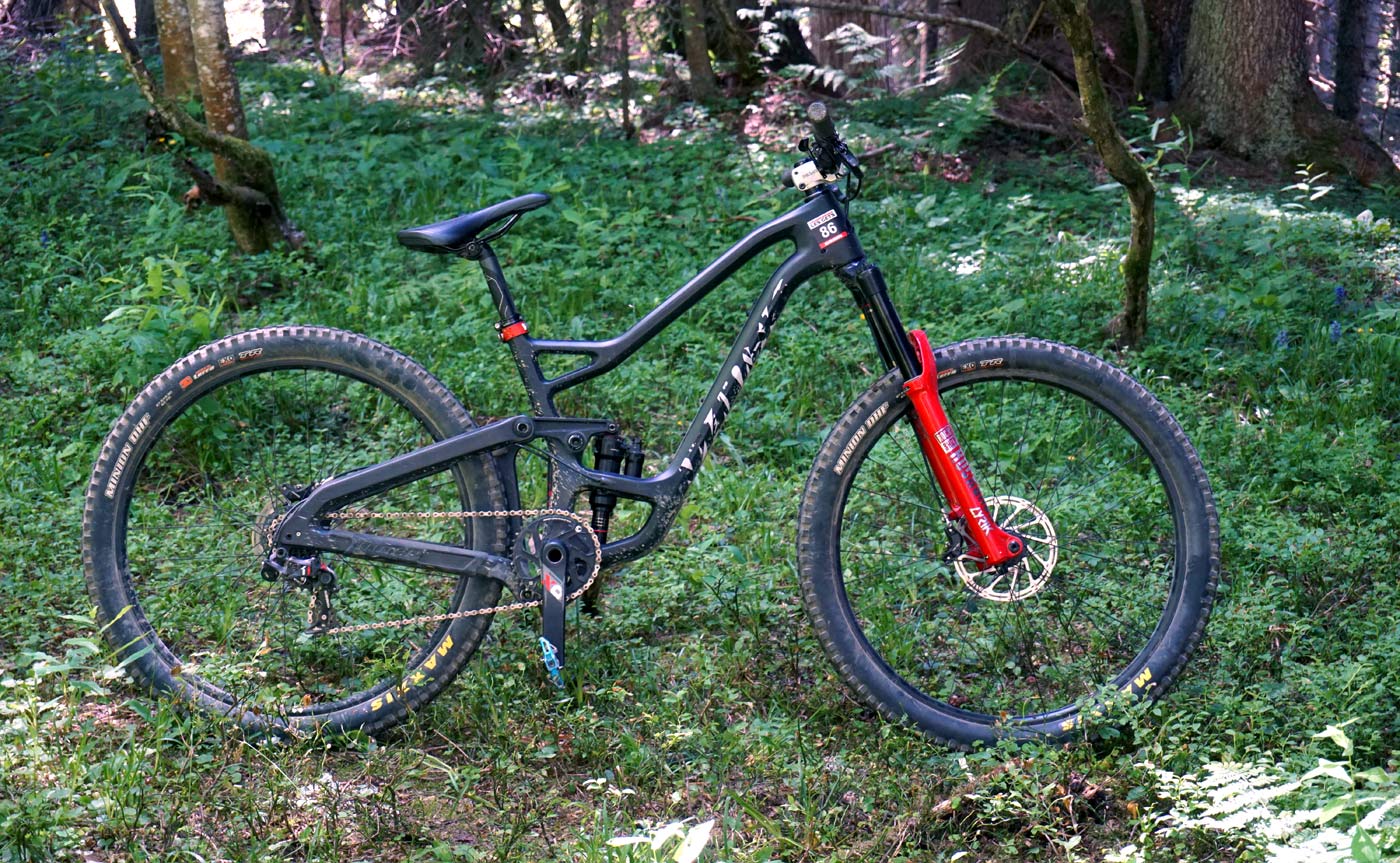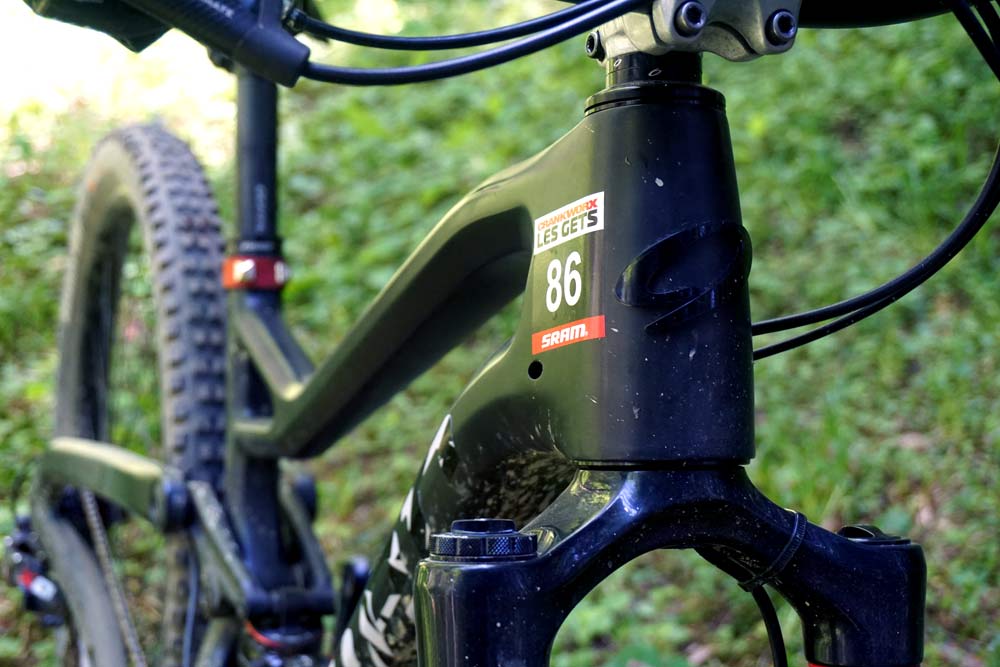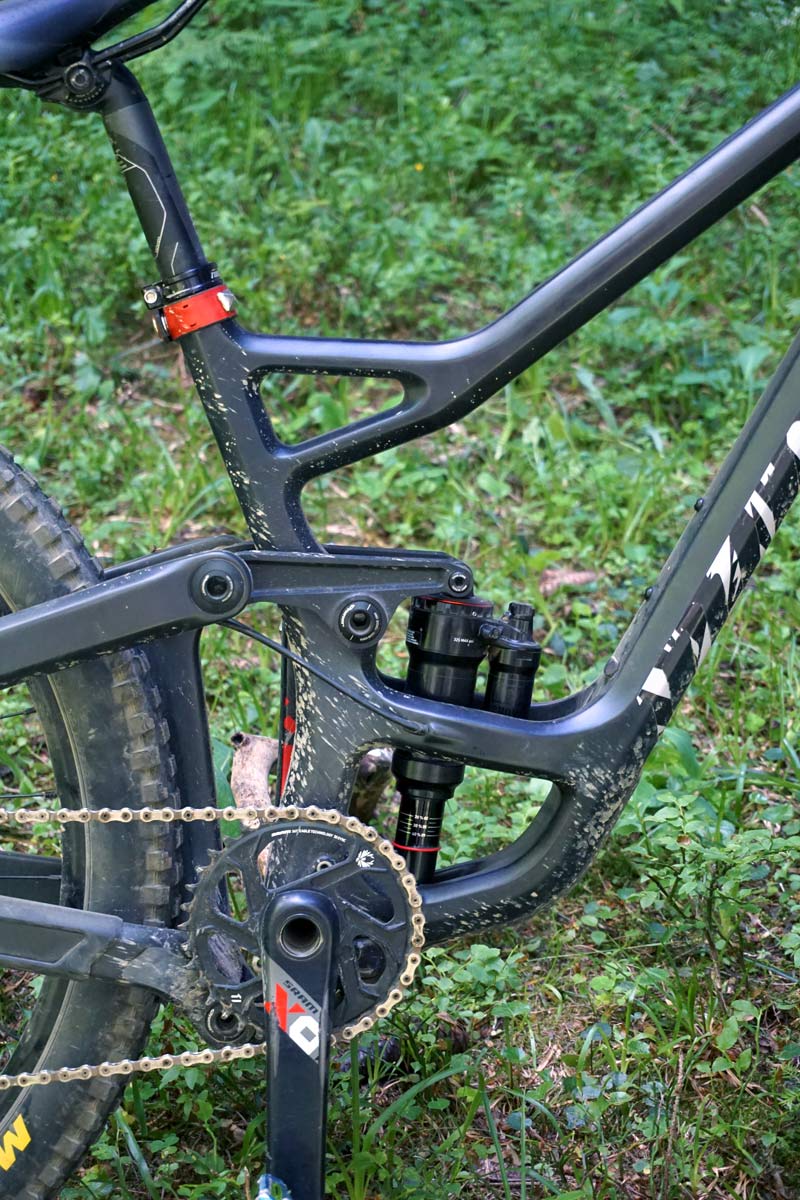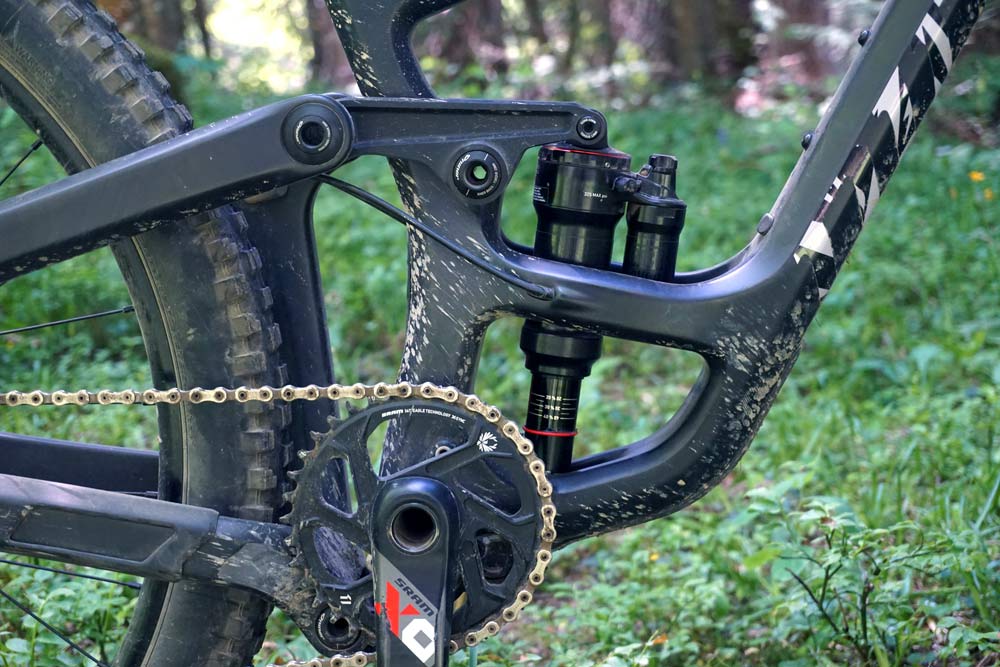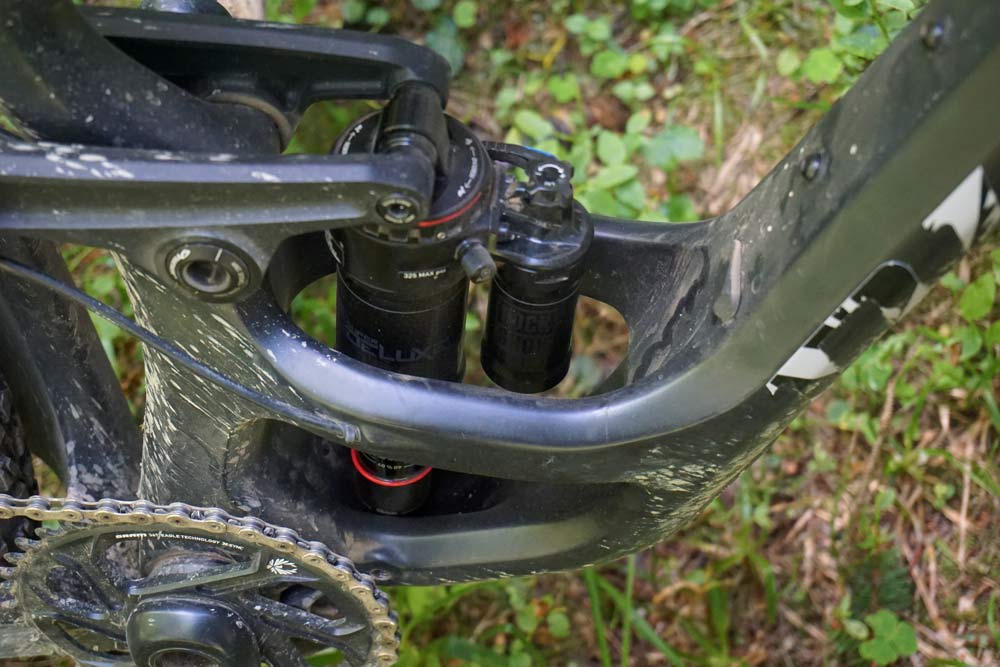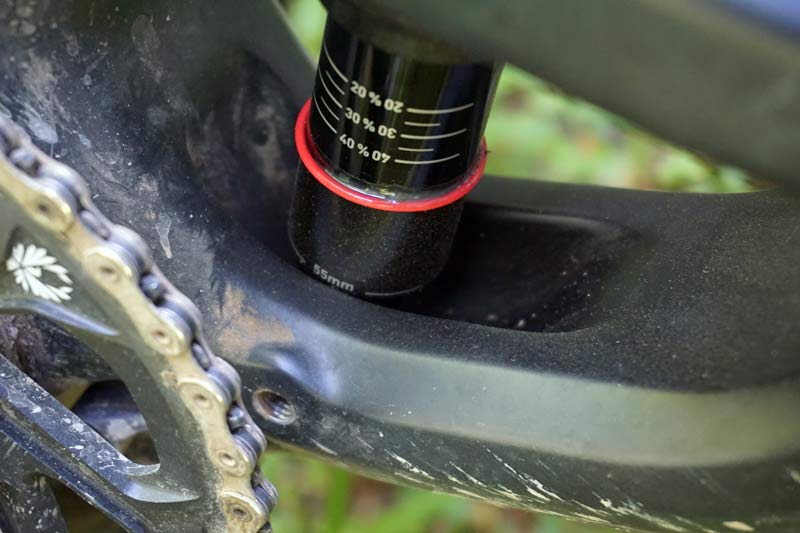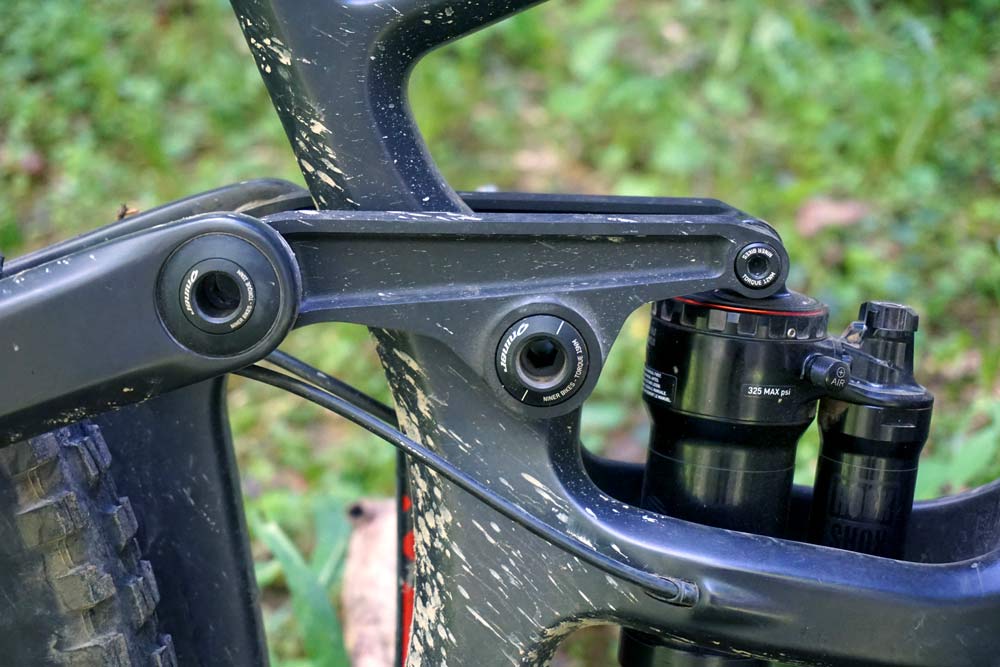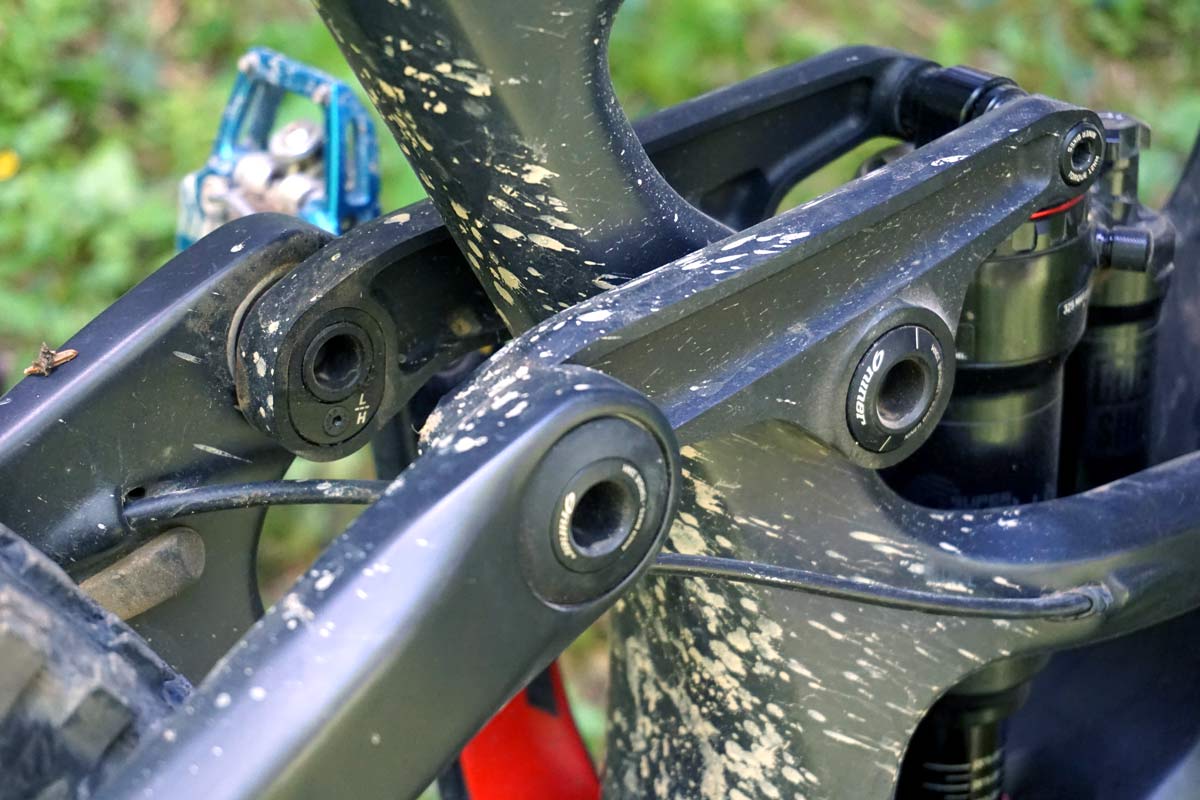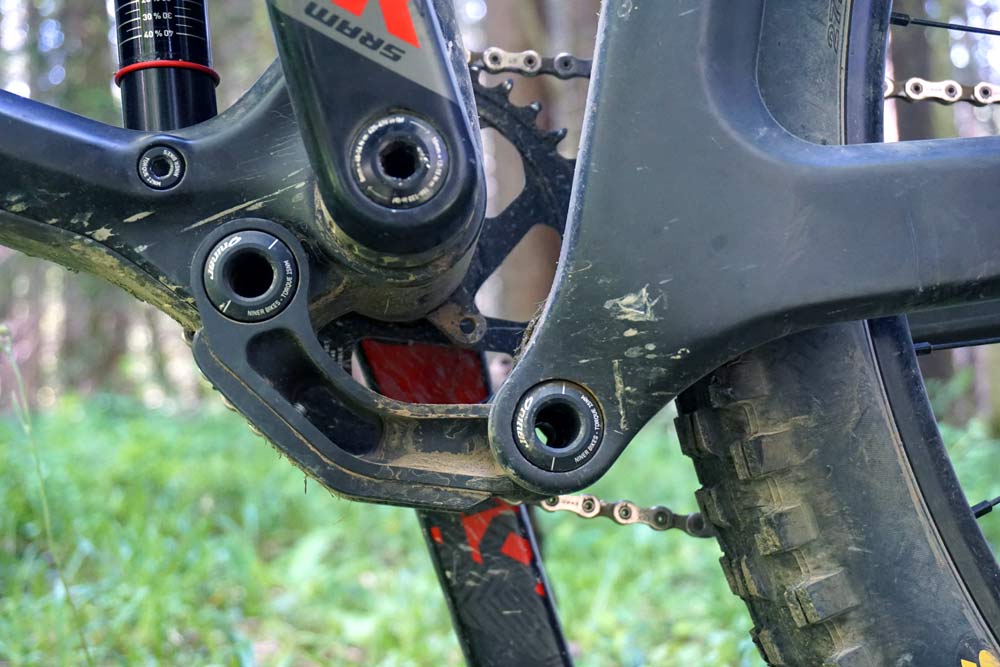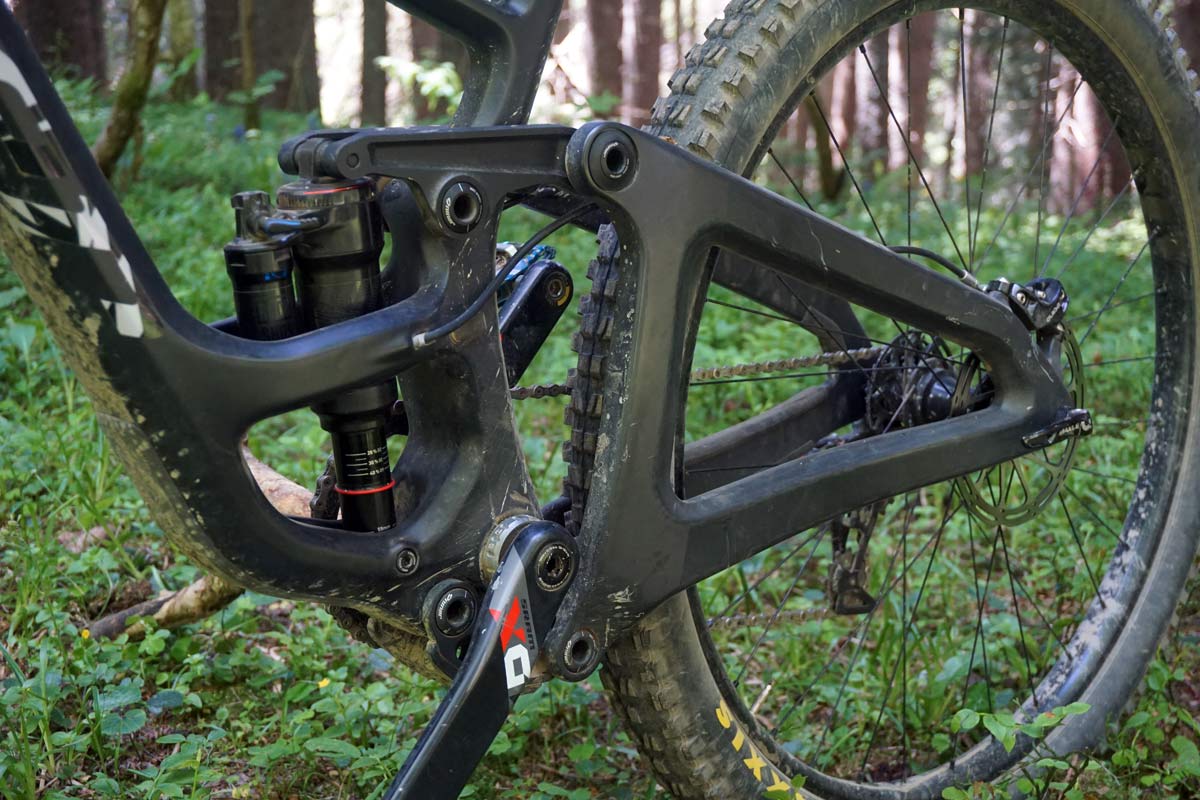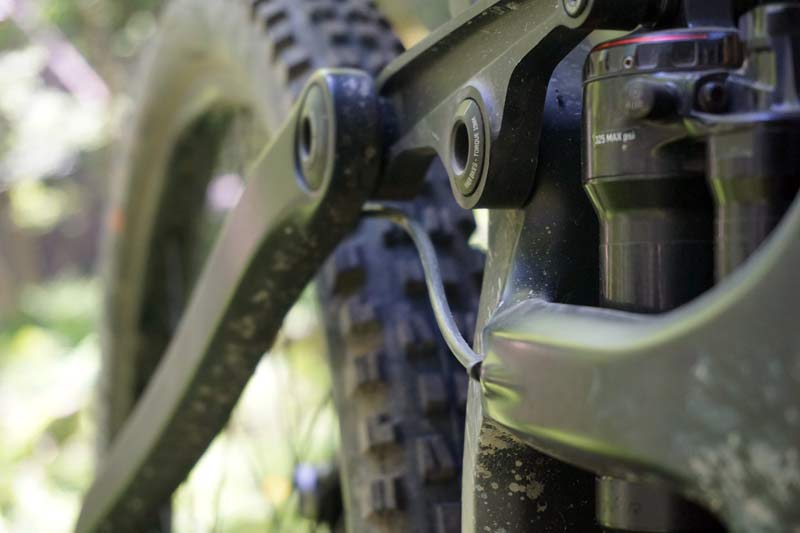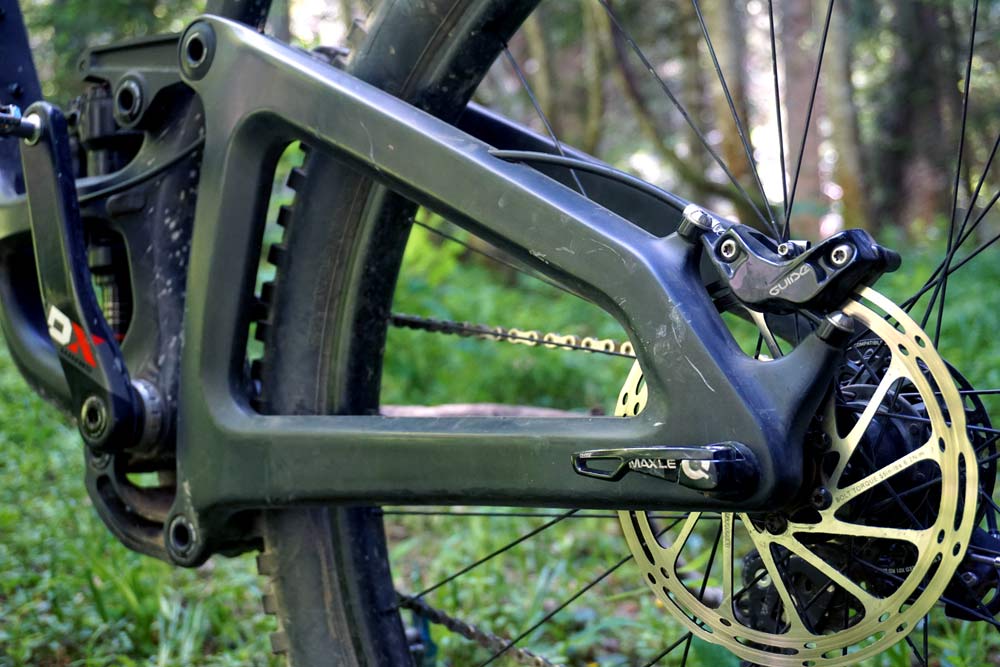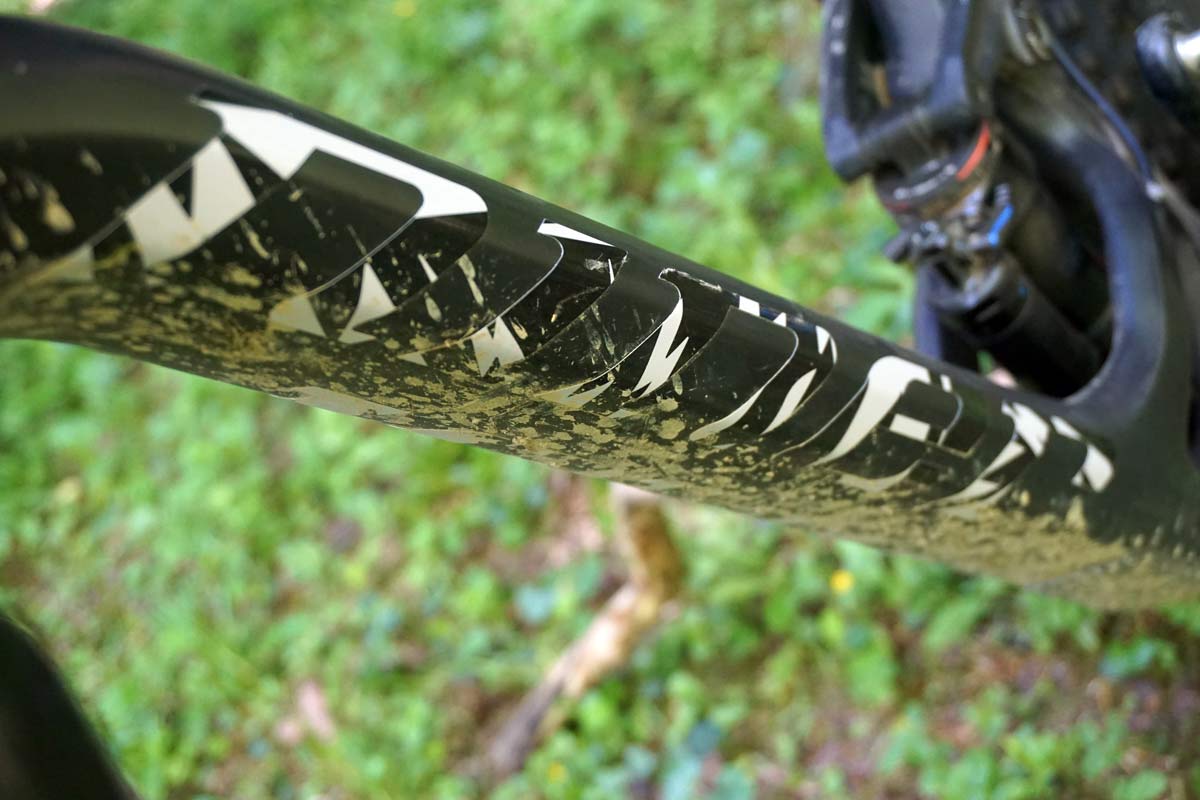Hitting the whip off and various slope events at Crankworx Les Gets in France, Kirt Voreis was testing out a prototype Niner mountain bike in competition. Obviously not set up for trail riding, his bike doesn’t necessarily represent the intended use for the new frame, but still shows off a lot of features that we’re guessing will make it into production. In fact, the entire frame seems well thought out and appears very polished, suggesting it’s close to becoming a real thing.
Kirt gave us a few details, but we also reached out to Niner for comment. Their response was that this model doesn’t yet have a name, and the suspension tunes aren’t quite dialed yet. Which, for us, translates to “it’s close, but we’re not ready to give up all the specs yet.”
Up front, there are ports aplenty. All external routing features are gone, so the four ports seen here (three non-drive side, one drive side) should be for front and rear shifting, rear brake, and steal dropper post. Or maybe something else…
The most striking difference is the frame’s extra tubing surrounding the shock. Kirt said it stiffens the whole thing up considerably, removing any lateral flex from pedaling input. I rode it, and I’d agree. More on that in a minute.
The shock is nesting inside the frame, but there’s still room for a piggy back shock. Possibly for a coil-over shock.
Not show, ISCG05 mounts are there, with one of them on a lower pivot endcap that stays motionless to keep it in the right spot.
Visually, the pivots all seem oversized compared to the current models.
Hiding behind the extra-oversized rear rocker pivot is an adjustable mounting spot to change the angles. Kirt said it’s a High/Low setting that changes the head angle, which means the BB height is also likely to change slightly.
One of the design concerns with Niner’s CVA suspension platform is that the longer travel their bikes have, the more space under the BB that lower link needs. Here, there’s plenty of space, which suggests a very long travel bike. We’ve hear rumor there could be multiple travel options, and it’s likely it’ll work with both 29er and 27.5 wheel sizes. Kirt’s bike was running 27.5×2.3 tires front and rear, and it’s unlikely Niner would make a bike that’s not able to run as a 29er.
Another difference we spotted is the cable and hose routing running to the rear triangle.
Both the shift and brake lines both run internally and pop out straight toward the rear, then run inside the seatstays. This is a big improvement over the current external routing because it gets rid of the clips, zip ties and other small parts that used to hold the brake hose…all of which usually rubbed on my calf and ankle.
The downtube had an interesting port covered by a bolt-on tab. Combined with the mounting spots on the inside of the chainstay and the rubber-covered port directly in front of the rear shock, we’re guessing this is to make the bike compatible with the upcoming Fox Live Valve electronically controlled suspension system.
Kirt’s bike was set up with a DH cassette and a very, very firm suspension. Not wanting to mess with any of his settings, I left everything as it was and hit the bike park for a lap. The top section was jumpy bike park, the second half was more my style of natural terrain with fast, rooty and rocky lines through the trees. I can’t comment on the suspension other than to say it worked better than it should have considering how little sag I was getting (seriously, Kirt had this set up for park jumps and whip-off competitions, so there was very little rear movement when I sat on the bike). What I did notice immediately was how much stiffer this bike is than the current RIP9. And the current RIP9 RDO is no slouch, but this one is noticeably stiffer both when holding the brakes and jamming down on the pedals and on the trail. The frame reacted immediately to every turn and nuanced movement. The geo seemed dialed for aggressive “enduro” style riding.
Stay tuned for more info as we get it!
